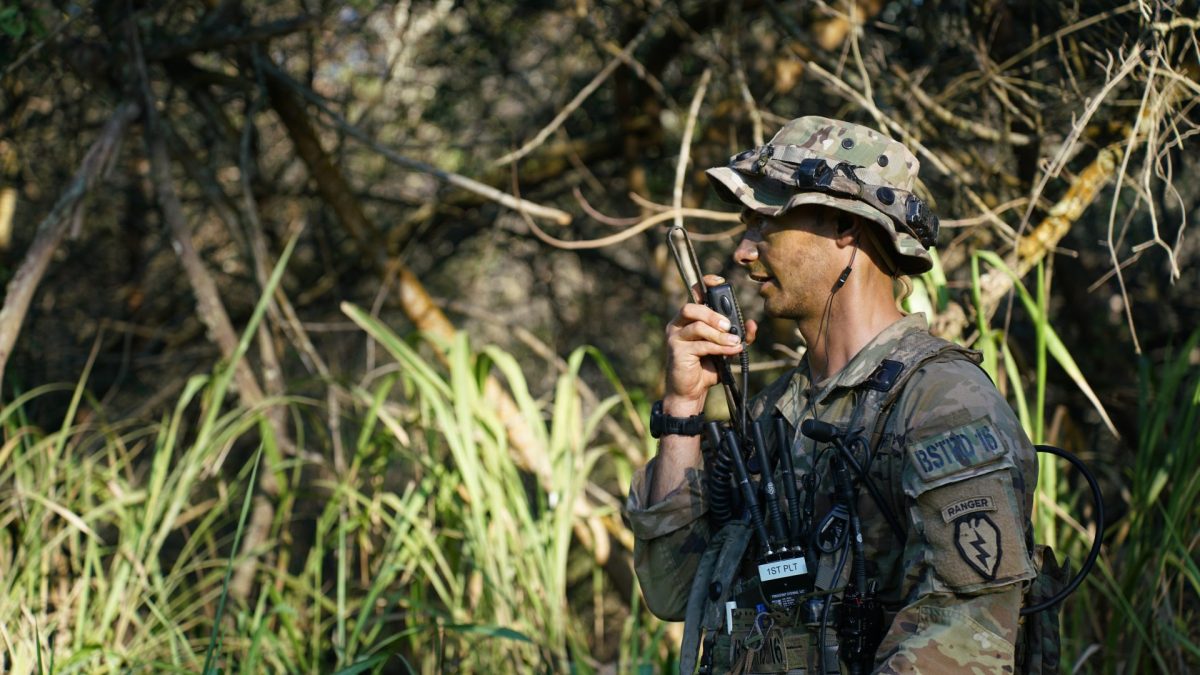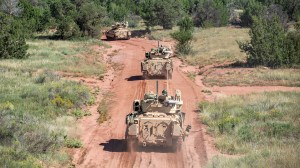Army turning network attention to radios next

SAVANNAH, Ga. — As the Army works to modernize its communications network — from improving command posts to Next Generation Command and Control — officials believe the next major area to focus on is its mix of radios.
“I think that’s what’s coming next … I think the next part of this network journey is really our investment strategy around tactical radios and tactical voice and data, and what does that look like for the Army,” Mark Kitz, program executive officer for command, control, communications and networks, said in an interview at the Army’s Technical Exchange Meeting. “How do we diversify? I would love to have a really diverse set of tactical infrastructure where I have multiple companies working in a really diverse environment, so a division may implement three different companies’ technologies, because that’s what’s the best network for them. Today, we’re too brittle in our approach to the tactical echelon in order to do that.”
He noted that the Army will likely always be on a journey with regard to who gets what radios, be it single channel, two channel, or sensitive but unclassified-encrypted.
Efforts such as Command and Control Fix — an initiative aimed at bolstering soldiers’ so-called “fight tonight” ability by using commercial and existing Army gear differently as a bridge before Next Generation C2 capabilities come online — taught the service important lessons on who needs what types of radios at what level.
“SBU-E and C2 Fix taught us we need a lot less exquisite radios in certain places. But [other communities], like aviation, needed more exquisite radios,” Kitz said. “We learned a lot about the distribution. I think over the next year, our focus now on the radios is: what is the right investment strategy in radios?”
He acknowledged that the Army in the past has been myopic when it comes to purchasing radios and radios acquired for a specific purpose or platform. But going forward, the service must be more flexible and better forecast its needs to industry to make the investments to stay competitive.
Officials in the program office over the next six months will be undergoing a collaborative effort with industry for the right investment strategy on radios. They’ll also be conducting an as-a-service pilot with 3rd Infantry Division, with the goal of getting two vendors on contract in first quarter of fiscal 2026 — a type of effort the Army has embarked on before.
“Radios-on-demand makes sense for the Army. Having the right radio with the right training when I need it is a whole lot better than a radio sitting in a room for two years,” Kitz said. “It’s absolutely worth us giving it a full go to see if this will work for the Army and working with these radio companies on — they need to make money, we need to be in a positive business relationship — how can they make money? How can we be in that relationship? We’re going to give it a go with the pilot in early FY ’26.”
The service wants to ensure soldiers have modernized radios that also make sense for their job roles.
“More cheaper radios in the end gets a lot more radios and all the best to the guys [who] are using, as opposed to buying really high-end radios that can [do] a whole bunch of things. In [the post-9/11 Global War on Terror] that may have made sense, but in a lot of cases today, it doesn’t,” Maj. Gen. Patrick Ellis, director of the C2 cross-functional team, said in an interview.
It ultimately comes down to radios and capabilities that enable soldiers to effectively communicate, be it via voice or text chat.
“Commanders want options,” Ellis said. “Commanders are looking for options for command and control.”






